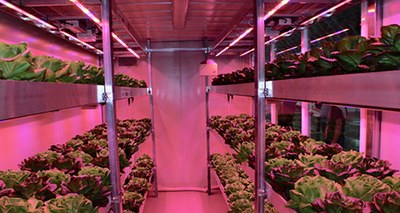Environment: Abandoned buildings turned into vertical greenhouses thanks to a project with ENEA
13/2/2020
 Regenerating abandoned warehouses and buildings such as barracks, warehouses and roadworkers’ houses by turning them into vertical greenhouses for hydroponic cultivation, i.e. out of soil, which offers higher amount of produce yelded with minimum water consumption and without the use of pesticides.
Regenerating abandoned warehouses and buildings such as barracks, warehouses and roadworkers’ houses by turning them into vertical greenhouses for hydroponic cultivation, i.e. out of soil, which offers higher amount of produce yelded with minimum water consumption and without the use of pesticides.
This is the objective of Ri-Genera, a project promoted by ENEA in the Veneto region, which includes Coldiretti Padua, Galileo Science and Technology Park, Advance Srl, Idromeccanica Lucchini Spa and Gentilinidue among the signatories.
The project is based on the "Arkeofarm" system, created by ENEA in collaboration with Idromeccanica Lucchini, a plant for intensive horticultural cultivation developed on several vertical floors.
" Advanced hydroponic techniques are used in the greenhouse, in a closed and air-conditioned environment with integral LED artificial lighting that can be totally automated thanks to robotic systems which controls all operations, from sowing to harvesting to packaging", ENEA researcher Gabriella Funaro explained.
The vertical greenhouse becomes a new urban feature, easily adaptable thanks to the possibility of being located both in ordinary and even blind buildings and in historical and architectural listed buildings, as it leaves the structure unaltered.
Inside, the crops are grown in vertically stacked layers, saving space and eliminating the threat posed by climate and the diseases plaguing outdoor cultivations.
The use of LED lights simulating the solar spectrum accelerate photosynthesis allowing plants to grow rapidly, with optimal organoleptic and nutritional qualities.
From the collaboration between ENEA and Idromeccanica Lucchini a mobile vertical farm model was born, called "BoxXLand", for soilless cultivation of crops in vertical containers in a closed loop system.
"Again, no insecticides are used and the environment is illuminated with LED light, while irrigation and air conditioning are managed by a software," Funaro continued.
Both models can be used to regenerate entire degraded suburban areas, with a change of intended use for production purposes, promoting the creation of advanced agri-food districts.
"The interest raised by Re-Generate in private companies and institutions in northern Italy gives us hope that the project can be exported from Veneto to the rest of the national territory and abroad.
This is why we have planned activities aimed at increasing the awareness of producers and consumers as well as institutions, on the benefits of hydroponic and vertical farming cultivation techniques in terms of environmental, economic and social sustainability ", Funaro concluded.
The first prototype of a vertical farm, created by ENEA on the occasion of Expo 2015 in Milan, was exhibited in numerous national and international fairs in the agri-food sector.
For more information please contact: Gabriella Funaro, ENEA – Partnerships and Contracts Management Directorate, gabriella.funaro@enea.it
